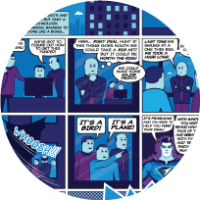What Is The Value of Marketing To Your ISO Business?
Mike Langford, finServ Marketing | August 2017
This is a bit of a long piece but I think you will find it to be a valuable read. Let’s start with a simple thought exercise.
Would you spend $100,000 to make $1 million?
The obvious answer is “Of course! What sane business person would say no to that exchange?” As an ISO, your entire business is built on this concept. You find merchants in need of capital and funding companies like Pearl Capital will pay you a commission that is often 10%, or more, of the funded amount of the deal.
The team at Pearl is happy to pay you this money because you function as their marketing engine for sourcing deals. If they had to acquire deals on their own they would have to spend 10% or more on marketing so why not work with you and other ISOs instead?
So, if Pearl Capital is willing spend around 28% of their deal revenue on marketing how much should you spend on your marketing as a percentage of your revenue?
What do banks spend on marketing?
American banks spent $17.1 billion on marketing and advertising in 2016 according to data from the Financial Institutions Examination Council (FFIEC) data. For banks that are selling high-value products, like credit cards, it’s common to see marketing and advertising spend above 10% of revenue. That’s a big number!
Why do lenders spend so much money on marketing?
The short answer? It makes winning deals easier. And in some cases it would be nearly impossible to source deals successfully without marketing driving leads to the door. Think of Pearl, how would they ever get you and other ISOs to send them deals without their willingness to pay you a fee? And how would you know to bring your deals to Pearl Capital if they weren’t actively marketing to you and the ISO community?
Makes sense, but let’s explore the value of marketing for an ISO business in a little more depth.
Claiming your piece of a $284B pie

EY examined the alternative lending market in 2016 and estimated that the SME (small & medium enterprises) market for alternative lending (including MCA) is likely in excess of $284 billion. That’s an even bigger number! And it explains why we see goldrush level spending in the alternative lending segment. Companies are investing huge sums of money to stake their claim on this relatively untapped market.
But why invest so much? Why 10% – 30% of revenue? That seems pretty high. Well, there are a few reasons why this makes sense:
High-Profit Margins
It is not uncommon for an MCA to be structured so that the funding company is purchasing a dollar of revenue for 65 cents. With the short-term nature of most MCA deals that type of profit potential is worth investing a lot of money to acquire. The funders, brokers, or ISOs (hopefully you) that figure out the right marketing formula for predictable deal acquisition stand to make a fortune.
Choice and Competition
Whether it’s a traditional small business loan, a line of credit, equipment financing, credit card processing, or a merchant cash advance, business owners almost always have a choice of which provider will win their business. While it’s true that many merchants considering an MCA as a source of capital may not have an abundance of choices when it comes to capital type, they do have plenty of choice when it comes to which ISO to work with.
The ISO business has extremely low barriers to entry which means there is a ton of competition in the market. Chances are, if you are calling on a merchant to offer him an MCA for his business other ISOs are calling him too. In a market with a lot of competition and a fairly commoditized product how do you stand out from the crowd?
Awareness and Branding
In an ideal world you would have no competition and merchants would have perfect knowledge of your ISO business and the products you offer. In the real world however business isn’t that easy. Most business owners know very little or nothing about MCA or the alternative lending industry in general. Remember, it’s a relatively new industry and you, as an individual ISO or ISO business, aren’t exactly a household name. Here’s the thing, neither are most of the funders and larger brokers.
That’s good and bad news. It’s good because you can get your marketing message out to merchants without being drowned out by Bank of America or Chase. However, the bad news is you have to invest a little heavier to educate the market.
How much should you invest in marketing?
The question of “How much should I spend on marketing?” is timeless. Every business wrestles with this question. But notice I used “invest in marketing” in the title question for this section.
Marketing is what fills seats at restaurants and brings buyers to the door at other merchants. Everyone knows that marketing is necessary but no one wants to waste money on strategies or advertising campaigns that fail to bring in new sales. So, how do you invest in the right areas? Here a few recommendations of where to invest:
Marketing Strategy – Too often business owners wing it. They throw a bunch of marketing “stuff” against the wall and see what sticks. But, smart business owners (including ISOs) invest time and money developing strategies for getting their message in front of likely buyers. If you don’t have a lot of money, you should invest extra time learning how to market to your target merchants.
Marketing Tools – There are a few must have marketing tools you should be using. Most are not that expensive. Below is a short list. I’ve made a note to craft full list in a future webinar or post.
Email Marketing Platform – Why? It’s important to have the ability to send marketing emails to a large list. It’s also important to be able to see who opened your email and who clicked on the links you shared. Email is one the most cost effective marketing tools ever created and it’s also the one that offers the most robust measurement opportunities for your ISO business. Remember to seek opt-in for your list to maximize the likelihood that recipients open and respond to your emails. The cost of email marketing platforms ranges from $10/mo for MailChimp and goes all the way up to enterprise levels with solutions like Marketo and Pardot by Salesforce.
Social Media Marketing Platform – We covered the power of Social Sales for ISOs back in our first webinar together. One of the first rules in marketing is to put your message where the customer’s attention is. Merchants, like everyone else in the modern world, spend a lot of time on Facebook, Instagram, Twitter, LinkedIn, and other social networks. To reach them you should use a professional tool like Hootsuite or Buffer. Tools like these allow you to schedule posts in advance, across multiple networks and accounts, while also offering professional level analytics and other options. Most social media management tools offer a free option to get you started and then you can upgrade to Pro accounts when you’re ready.
Website – Merchants are going to Google you and they are going to expect to find a professional presence that gives them confidence that you are indeed someone who can help them with their business financing needs. Make things easy on them and have a website, even a simple one, that tell your story. Tell them who you are, what you offer, and why you are uniquely positioned to serve their business. It doesn’t have to be fancy, just make the site look clean and be sure to have a “Contact Us” page or button that’s easy to find. I recommend Squarespace but there are dozens of other simple platforms to use. Most cost under $25/mo for a full featured DIY business website.
Print Materials – It may seem odd to recommend print materials in the digital age but people still respond to a physical interaction with your brand. You will often have merchants ask you to send something to them in the mail or say they don’t need an MCA right now but encourage you to follow up in the future. Why not send them a brochure and your business card? You’ll be surprised how many business cards are sitting in the average business owner’s desk for that “just in case” moment. Check out 99Designs and Moo to get some quality print assets designed and printed.
Marketing Process – In our most recent webinar, “Persistence Wins! Using the Right Marketing Cadence”, we focused a lot on the process of marketing. Once you’ve developed your strategy and you have your marketing tools in place it’s time to put then into action. The simplest way to explain your goal for this process is “your marketing activity should drive qualified leads to your sales team.” Whether you have a sales team of one or one hundred that goal doesn’t change. Below is a basic process that you can build on:
Awareness – Make sure you have a healthy amount of activity that is designed to make target merchants aware of your ISO business. You want them to know who you are and have you on the top of their list when they need capital.
Interaction Level One – Offer merchants the “opportunity” to interact with you by providing calls-to-action (CTAs) in your email, social, website, and print material. This can be as simple as a an offer to answer their questions or sign-up for your newsletter or attend a webinar. The goal is to get them in the door for the first level of the qualification process.
Interaction Level Two – Provide merchants who have interacted before with an “exclusive opportunity” to engage on a more serious level. Require some level of qualification such as completing a form that tells you some important details about their business. Now you have merchants raising their hands to tell you they’re interested in what you have to offer.
Interaction Level Three – Provide qualified leads with an opportunity to schedule a call with you. The merchants have walked themselves through a process, that you initiated for them with your marketing, to where they are scheduling a call with you to see if you can help them.
If this process looks simple to you that’s by design. Of course there will be more work to it and you will have to make adjustments along the way but the basic framework is sound. It’s how many businesses acquire clients in the digital age and it’s the foundation of the ISO Marketing Program that Pearl Capital has created. Stay tuned for more.
As always, if you have any questions please feel free to reach out to the team at Pearl Capital or me at finservMarketing. We are here to help you claim your piece of that $284 billion pie.
Other Newsletters
 PRESS: Pearl Capital Business Funding LLC Resumes Merchant Cash Advances After Processing $1.75 B in PPP Loans
PRESS: Pearl Capital Business Funding LLC Resumes Merchant Cash Advances After Processing $1.75 B in PPP Loans  What’s New at Pearl Capital
What’s New at Pearl Capital  Invest in Tech or Die… How MCA Evolves
Invest in Tech or Die… How MCA Evolves 

 Tools
Tools  Webinars
Webinars  Guides
Guides  Videos
Videos  Comics
Comics  Newsletters
Newsletters 
